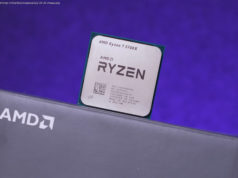Earlier this week, Samsung officially announced the Galaxy S10 (and S10+), the company’s latest and greatest Android flagship. Somewhat obviously, the S10 is al…
Earlier this week, Samsung officially announced the Galaxy S10 (and S10+), the company’s latest and greatest Android flagship. Somewhat obviously, the S10 is also the tenth-generation Galaxy S, which means it’s been ten years since the very first Galaxy handset. Considering this momentous occasion, we thought we’d take a look back at the history of the Galaxy S line and see just how far Samsung has come in the past decade.
Before we dive into the Galaxy S series, we need to mention the Samsung Galaxy i7500, the company’s first-ever Android phone (It shipped with Android 1.5 Cupcake). It debuted ten years ago in 2009, and at that point, the only other company making Android handsets was HTC, so it didn’t really have a lot of competition. Though it had a 3.2-inch AMOLED display with a 320 by 480 resolution, 8GB of storage and a 5-megapixel camera (decent specs for its time), it had a pretty dull and uninspiring design. Just like a lot of other phones then, it even had physical navigation buttons, complete with Start Call and End Call keys. Oh, how times have changed.
The Samsung Galaxy S, introduced in 2010, was a lot more appealing. Gone was that array of physical keys; now it had just a single home button, along with a touch-sensitive menu button on the left and a back button on the right. It’s a design motif that it (and a lot of other Android phones) would return to, time and time again. The Galaxy S had a 4-inch Super AMOLED screen and a 480 by 800 resolution that plenty of people found pretty impressive. Oh, and this was also the first Android phone to ship with TouchWiz, Samsung’s proprietary UI. It helped Samsung stand out from the rest of the Android market, but TouchWiz also added a lot of unnecessary bloat, which sometimes made the phone sluggish.
Buoyed by the success of the Galaxy S, Samsung introduced the Galaxy S II (Also known as the S2) in 2011. The S II was thinner, lighter and faster than its predecessor, came in 16GB and 32GB varieties and had an improved display to boot. The 4.3-inch Super AMOLED Plus was quite a stunner, and our review even described it as „nothing short of spectacular.“ It also had an upgraded 8-megapixel camera on the back (now with flash!), a 2-megapixel shooter on the front plus a dual-core 1.2GHz processor. It still had that TouchWiz interface, but people must not have minded that much, because it went on to sell millions and millions of units, putting the Galaxy brand on the proverbial map.






